
The music of Argentina includes a variety of traditional, classical, and popular genres. According to the Harvard Dictionary of Music, Argentina also "has one of the richest art music traditions and perhaps the most active contemporary musical life.

Buenos Aires, officially the Autonomous City of Buenos Aires, is the capital and primate city of Argentina. The city is located on the western shore of the Río de la Plata, on South America's southeastern coast. "Buenos Aires" is Spanish for "fair winds" or "good airs". Buenos Aires is classified as an Alpha global city, according to the Globalization and World Cities Research Network (GaWC) 2020 ranking.
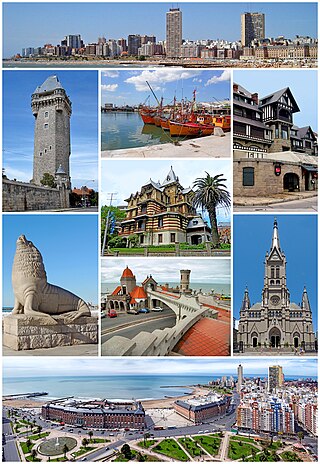
Mar del Plata is a city on the coast of the Atlantic Ocean, in Buenos Aires Province, Argentina. It is the seat of General Pueyrredón district. Mar del Plata is the second largest city in Buenos Aires Province. The name "Mar del Plata" is a shortening of "Mar del Rio de la Plata," and has the meaning of "sea of the Rio de la Plata basin" or "adjoining sea to the (River) Plate region". Mar del Plata is one of the major fishing ports and the biggest seaside beach resort in Argentina. With a population of 682,605 as per the 2022 census [INDEC], it is the 5th largest city in Argentina.

La Plata is the capital city of Buenos Aires Province, Argentina. According to the 2022 census, the Partido has a population of 772,618 and its metropolitan area, the Greater La Plata, has 938,287 inhabitants. It is located 9 kilometers inland from the southern shore of the Río de la Plata estuary.

The culture of Argentina is as varied as the country geography and is composed of a mix of ethnic groups. Modern Argentine culture has been influenced largely by the Spanish colonial period and the 19th/20th century European immigration, and also by Amerindian culture, particularly in the fields of music and art. Buenos Aires, its cultural capital, is largely characterized by both the prevalence of people of Southern European descent, and of European styles in architecture. Museums, cinemas, and galleries are abundant in all of the large urban centers, as well as traditional establishments such as literary bars, or bars offering live music of a variety of music genres.

Florida Street is a popular shopping street in Downtown Buenos Aires, Argentina. A pedestrian street since 1971, some stretches have been pedestrianized since 1913.

The Argentine War of Independence was a secessionist civil war fought from 1810 to 1818 by Argentine patriotic forces under Manuel Belgrano, Juan José Castelli, Martin Miguel de Guemes and José de San Martín against royalist forces loyal to the Spanish crown. On July 9, 1816, an assembly met in San Miguel de Tucumán, declaring independence with provisions for a national constitution.
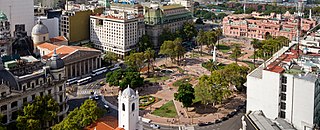
The Plaza de Mayo is a city square and the main foundational site of Buenos Aires, Argentina. It was formed in 1884 after the demolition of the Recova building, unifying the city's Plaza Mayor and Plaza de Armas, by that time known as Plaza de la Victoria and Plaza 25 de Mayo, respectively. The city centre of Buenos Aires, Plaza de Mayo has been the scene of the most momentous events in Argentine history, as well as the largest popular demonstrations in the country. On the occasion of the first anniversary of the May Revolution in 1811, the Pirámide de Mayo was inaugurated in the square's hub, becoming Buenos Aires' first national monument.

The practice of sports in Argentina is varied due to the population's diverse European origins and the mostly mild climate. Association football is the most popular discipline and other sports played both professionally and recreatively athletics, auto racing, basketball, boxing, cycling, field hockey, fishing, golf, handball, mountaineering, mountain biking, padel tennis, polo, roller hockey, rowing, rugby union, sailing, skiing, swimming, tennis, and volleyball. Argentine achievements can be found in team sports such as association football, basketball, field hockey and rugby union, and individual sports such as boxing, golf, tennis and rowing. Pato, the national sport, is not very popular.
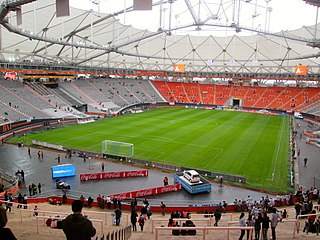
The Estadio Único Diego Armando Maradona is a multi-purpose stadium located in Tolosa, La Plata Partido, next to the city of La Plata, Argentina. It is also known popularly as the Estadio Único and is owned by Buenos Aires Province, administered jointly by the provincial government, the Municipality of La Plata, and the football clubs Estudiantes de La Plata and Gimnasia y Esgrima de la Plata.

The United Provinces of the Río de la Plata, earlier known as the United Provinces of South America, was a name adopted in 1816 by the Congress of Tucumán for the region of South America that declared independence in 1816, with the Sovereign Congress taking place in 1813, during the Argentine War of Independence (1810–1818) that began with the May Revolution in 1810. It originally comprised rebellious territories of the former Spanish Viceroyalty of the Río de la Plata dependencies and had Buenos Aires as its capital.
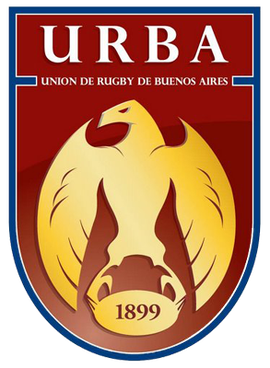
The Buenos Aires Rugby Union, usually referred as URBA, is the Argentine governing body that organises and controls the rugby union in the Buenos Aires Province. The remaining clubs from the province are distributed amongst four other unions: Unión de Rugby del Oeste de Buenos Aires in the west, Unión de Rugby del Centro de la Provincia de Buenos Aires in the centre, Unión de Rugby de Mar del Plata in the east, and Unión de Rugby del Sur in the south.

The Teatro Argentino de La Plata is the second most important lyric opera house in Argentina, after the Teatro Colón in Buenos Aires. The theatre is located in a central block of the city of La Plata, the capital of Buenos Aires Province. The venue occupies the block bounded by the 9 and 10 streets and 51 & 53 avenues; it belongs to the Monumental Axis of public buildings in La Plata.
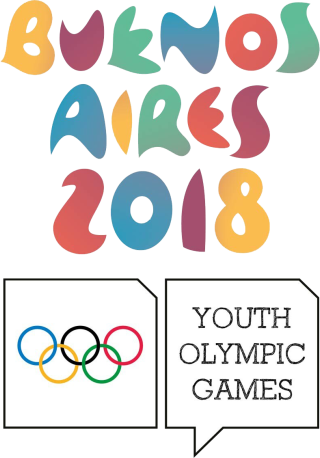
The 2018 Summer Youth Olympics, officially known as the III Summer Youth Olympic Games, and commonly known as Buenos Aires 2018, were an international sports, cultural, and educational event held from 6 to 18 October 2018 in Buenos Aires, Argentina. They were the first Youth Olympic Games held outside of Eurasia, and the first Summer Games held outside of Asia and the first to be held in the Western and Southern hemispheres. It was the second Olympic Games held in South America after the 2016 Summer Olympics in Rio de Janeiro, Brazil.

La Trastienda Club is a prominent café-concert style venue in Buenos Aires.
Carlos Inzillo is a jazz musician, producer and historian from Argentina.

Harrods Buenos Aires was an Argentine retail company based in Buenos Aires, whose building was located on the corner of Córdoba Avenue and San Martin street. The store was a branch of the famous Harrods of London which was opened in 1849. Harrods Buenos Aires opened in 1914 and closed in 1998, since closure there has been numerous attempts to reopen the store.
Gustavo Zajac is a theater director, choreographer and professor of musical comedy and jazz dance. He currently resides in New York.

Sanitary Works of the Nation was a state-owned company of Argentina dedicated to supplying the public with running water and sewer services. Established in 1912, the company's operation area included mostly the Buenos Aires Province area.
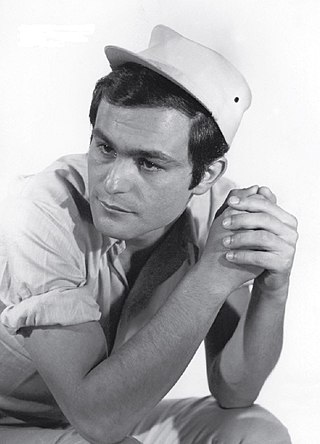
The 100 Greatest Films of Argentine Cinema, also known as the Survey of Argentine cinema, are a series of opinion polls carried out to establish a list of the greatest films of Argentine cinema of all time. The original survey was carried out by the Museo del Cine Pablo Ducrós Hicken in the years 1977, 1984, 1991 and 2000. In 2022, a new edition was held, organized by the film magazines La vida útil, Taipei and La tierra quema, with support from INCAA, the Mar del Plata International Film Festival, the FestiFreak International Film Festival of La Plata, the Casa de la Cultura of General Roca and the Museo del Cine Pablo Ducrós Hicken.
















